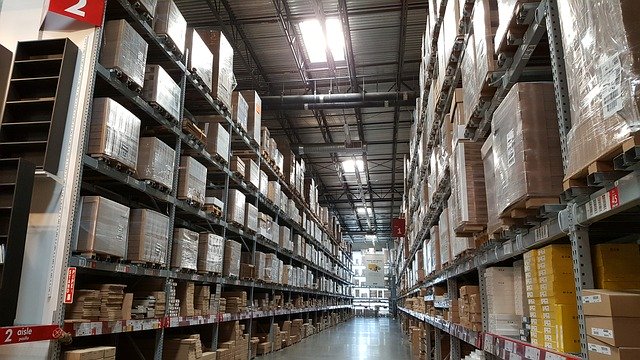
Warehouses are centers that are structured and planned to carry out storage functions such as: conservation, control and dispatch of goods and products, reception, custody, etc. The warehouse is responsible for regulating the flow of stocks.
Keep in mind that here at SAM Technology you will find what you need in order to take operations to a whole new level and increase productivity.
The main activities and functions performed in the stores:
Merchandise reception
It is the process that consists of giving input to the goods that the suppliers send. During this process, it is verified that the merchandise received coincides with the information contained in the delivery notes.
It is also necessary to check the receipt of the merchandise if the quantities, quality or characteristics correspond to the order.
Storage
It consists of the location of the merchandise in the ideal areas for it, with the objective of accessing them and that they are easily located.
For this, fixed means are used, such as industrial mechanical shelving, warehouses, installations, supports, etc. and internal transport means such as trucks, elevators or conveyor belts.
Conservation and maintenance
During the time that the merchandise is stored, it has to be kept in perfect condition. The conservation of the merchandise implies the application of the current legislation regarding hygiene and safety in the warehouse, in addition to the special rules on maintenance and care of each product.
Existence management and control
One of the key functions that consists in determining the quantity of each product to be stored, calculating the quantity and the frequency with which each order will be requested in order to minimise storage costs.
Freight forwarding
The shipment of goods begins from the moment the customer places the order, beginning the process with the selection of merchandise and packaging, as well as the choice of means of transport.
In the commercial distribution warehouses, other operations are also carried out, such as merchandise consolidation, shipment division and cargo combination.
Classification of warehouses
Remember that stores can be classified according to different criteria:
According to the structure or under construction
- Open pit warehouses
- Covered warehouses
According to the company’s activity
- Trading company: merchandise store and some cases of packaging
- Industrial company: warehouse of raw and auxiliary materials, warehouse of diverse materials and warehouse of finished products.
According to the logistic function
- Logistic platforms or central warehouses
- Transit or consolidation warehouses
- Regional or area and local stores
According to the degree of automation
- Convention stores
- Automated warehouses
- Automatic warehouses
According to ownership or property
- Warehouses in property
- Warehouses for rent
- Warehouses under leasing
Planning and location of warehouses
The companies that need to store, may require one or several types of warehouses, having to make as the first decision if they will have them in property, rent or both cases.
Once the first step is completed, the second is to plan the location, distribution and design of the spaces, the facilities equipment, as well as the mechanical means and human resources for handling and storage of the goods.
An optimal warehouse operation planning consists of the management of available resources and the forecast of needs, so that products are found when, how much and where they are required.
- When: at the time the order is needed or arrives from the production center, distribution center or point of sale.
- How much: the amount requested by internal or external customers.
- Where: the place of delivery requested by customers.
For a company that manufactures product, the warehouse is a fundamental piece in the success of the organization. Therefore, a series of variables must be taken into account when planning a warehouse project:
- The manufacturing capacity of the industry.
- The characteristics of the distribution network.
- The cost of the land, building, facilities and equipment.
- The product: the types, characteristics, the total quantity to be stored.
Proper planning of storage and transport activities is also necessary, taking into account the following aspects:
- The location and size of production centers and storage premises.
- Demand forecasting and supply of materials and products.
- The stock management system and inventory control.
- The material merchandise handling system.
- The organization of supply and distribution transport.
- The procedure for ordering, packaging and product protection.
- The level of service that will be provided to the client.
- The information system between the different centers or sections.
The central warehouse
The central warehouse is the axis that is used to collect the finished products that are obtained in the industrial processes and that come, therefore, from different sources of supply that in turn act as their distribution center.
This double function implies difficulties in deciding where to locate the warehouse and leads us to ask ourselves the best place to do it.
The decision must be made by establishing a balance between the origin and destination of the stored products. The origin of these is the location of the sources of supplies and gives rise to two different situations:
- The products come from a single point of origin, we are facing the central warehouse of a factory and the most logical thing is that the warehouse is integrated in the factory itself or very close to it.
- The products come from several points of origin or sources of supply; in this case it is convenient to place them in a strategic point to all of them.
- The destination of the products is related to the territorial position of the distribution warehouses and the points of sale, because it is necessary to choose a point that is well connected with the rest of the territory and that is accessible to all the means of transport that will be used.
If you want to take your operations to another level and increase productivity here at SAM Technology you will find what you need. Contact us now.